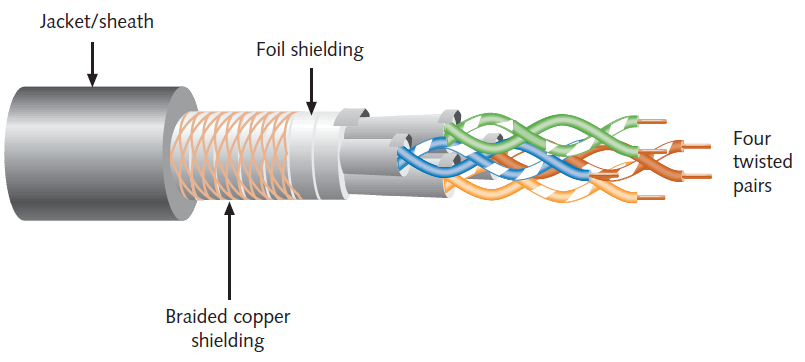





| Industry abbreviations | ISO/IEC 11801designation[A] | Cable shielding | Pair shielding | Illustration |
| UTP, TP | U/UTP | None | None |

|
| FTP, STP, ScTP | F/UTP | Foil | None |

|
| STP, ScTP | S/UTP | Braiding | None |

|
| SFTP, S-FTP, STP | SF/UTP | Braiding and Foil | None |

|
| STP, ScTP, PiMF | U/FTP | None | Foil |

|
| FFTP, STP | F/FTP | Foil | Foil |

|
| SSTP, SFTP, STP, STP PiMF | S/FTP | Braiding | Foil |

|
| SSTP, SFTP, STP | SF/FTP | Braiding and Foil | Foil |

|
By continuing to use the site you agree to our privacy policy Terms and Conditions.